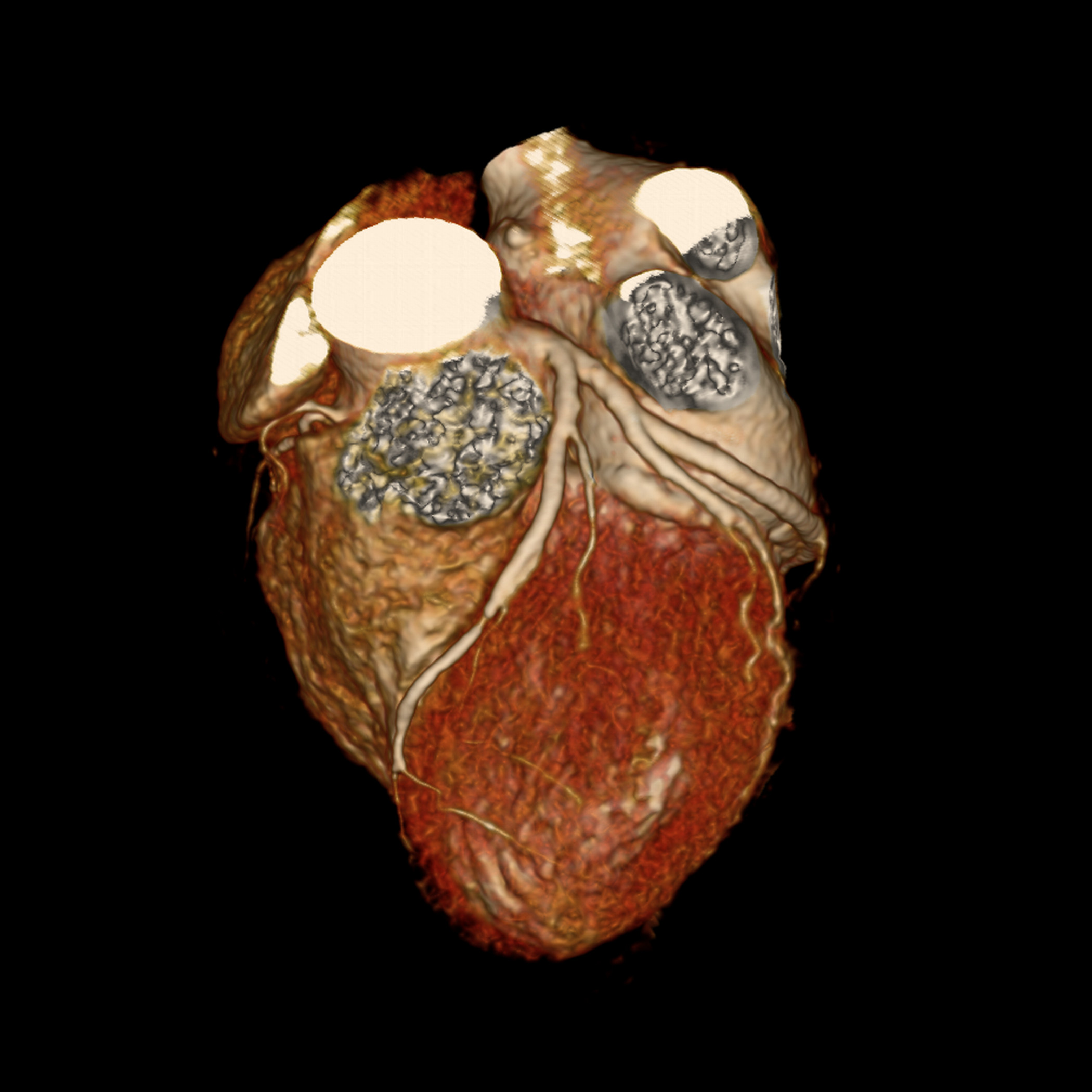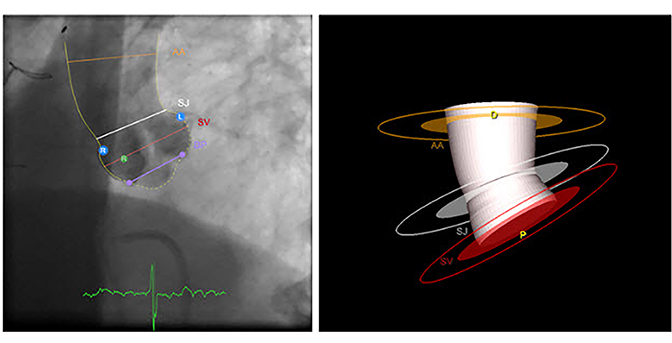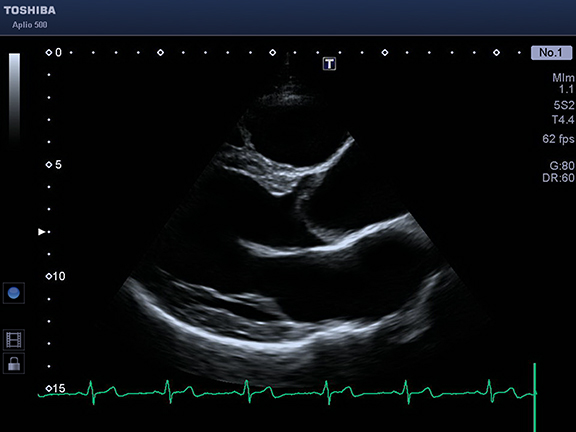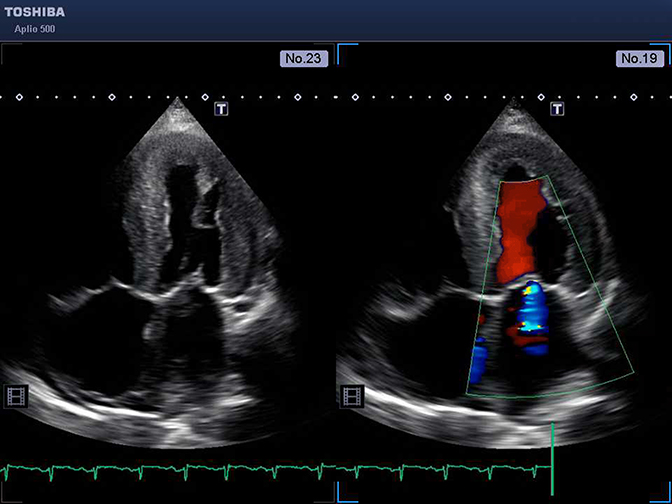Healthcare Reform and Cardiovascular Imaging: Clinical Issues and Technology
Images








One key, overarching goal of the Affordable Care Act (ACA) is to deliver cost-effective, high-quality healthcare services to all Americans. This need to reduce costs while improving the quality of treatment is particularly urgent in cardiovascular care. Applied Radiology recently surveyed several leading cardiac care specialists on clinical issues and the role that cardiovascular imaging technologies will play in the journey toward making affordable, quality healthcare available to heart patients.
The sobering statistics
One in three Americans—an estimated 88.6 million adults—has at least one type of cardiovascular disease, according to the American Heart Association (AHA),1 which estimates that that percentage will grow to almost 44 percent by 2030.
Figures compiled by other organizations parallel those of the AHA. For example, the Washington, D.C.-based healthcare consulting firm IHS projects that the number of Americans with cardiovascular disease or a history of stroke or heart attack will grow by close to 27 percent by 2025, according to a recent article in Health Affairs analyzing future healthcare workforce needs.2 Timothy M. Dall, managing director for healthcare and pharma at IHS, and colleagues predict that demand for vascular surgery services will grow by 31 percent between 2013 and 2020, followed by a 20 percent growth in demand for cardiology, and 18 percent growth in demand for radiology services.3 However, these are national averages; on a state-by-state basis, growth in demand varies widely—growth in cardiology demand, for example, ranges from 5 percent in West Virginia to 51 percent in Nevada over the same time period.
Financially speaking, the AHA estimates that the direct and indirect costs of cardiovascular disease reached $315.4 billion in 2010.4 Direct medical costs alone to treat cardiovascular disease are expected to increase to $918 billion by 2030, more than 60 percent of which will comprise hospital costs, including cardiovascular imaging.
Considering U.S. Census Bureau projections that the American population of those aged 65 and over—the most common age group afflicted by heart disease—will grow by nearly 45 percent by 2025, while the overall U.S. population will grow by only 9.5 percent in the same time frame, statistics like these make a strong case that maintaining the status quo with respect to cardiac care is not a viable long-term option.
Based on interviews with a select group of contributing physicians, this article discusses how conventional and emerging technologies in computed tomography (CT), magnetic resonance imaging (MRI), ultrasound, and interventional radiography can all contribute to cost reductions, patient safety and improved patient care.
Computed Tomography
The importance of CCTA
Steven D. Wolff, MD, PhD, director of Carnegie Hill Radiology, a cardiac imaging center in New York City, is a staunch advocate of coronary CT angiography (CCTA). “When a cardiologist decides to order an imaging test because he is concerned that a patient’s chest pain is related to obstructive coronary artery disease,” Dr. Wolff said, “the cardiologist has a number of choices: stress echocardiography, stress perfusion imaging with SPECT, PET, or MRI, or a coronary CTA. If the patient has no known history of coronary artery disease, a coronary CTA should almost always be the test of first choice.”
While all the tests can identify obstructive coronary artery disease (CAD), only CCTA can assess the extent of nonobstructive disease, Dr. Wolff said, noting that this is important incremental information, given that most patients with no prior history of CAD have a negative stress test.
“Compared to patients with a negative stress test, patients with no coronary artery disease on CTA have a much longer warranty,” he said. “A patient with a negative coronary CTA may have a warranty of greater than five years as compared to the typical one-year warranty with stress tests.” Factored over time, a single coronary CTA exam has the potential to save a substantial amount of money, he said.
Another benefit of CCTA is that a patient with no CAD who experiences a recurrence of chest pain in the middle of the night can be referred for assessment of noncardiac causes of chest pain, often sparing the patient a needless—and costly—visit to a hospital emergency department.
The cost of treatment for an estimated 6 million ED visits relating to chest pain in the U.S. is nearly $10 billion per year.5 The use of CCTA in patients admitted to the ED with chest pain has the potential to save hundreds of millions of dollars. Indeed, a CCTA program launched several years ago for the ED at Stony Brook University Medical Center (SBUMC) in New York State has reduced costs by several million dollars annually, said Michael Poon, MD, professor of radiology and director of advanced cardiovascular imaging, and director of the Dalio Center for Cardiovascular Wellness and Preventative Research at SBUMC.
CCTA was introduced at Stony Brook in 2009 as an alternative for ED evaluation of cardiac chest pain. Standard treatment at the time included serial electrocardiograms and blood draws for cardiac troponin I levels to rule out acute coronary syndromes (ACS). These procedures required the patient to wait several hours in the ED before being either discharged or admitted for additional treatment, including a cardiac stress test. The waiting time increased crowding in the ED, leading to patient discomfort and increasing the potential for adverse events.
A retrospective observational study comparing the clinical outcomes and efficacy of two treatments to evaluate chest pain in low- to intermediate-risk patients performed over 28 months (when the CCTA was available only 12 hours daily) revealed some eye opening findings.6 The study, published in the August 2013 issue of the Journal of the American College of Cardiology,5 was the first to evaluate the effectiveness of CCTA availability for at least 12 hours per day continuously for chest pain triage in a busy emergency department. The study compared admission rates, readmission rates, length of emergency department stay, and other factors of a standard treatment patient cohort and a CCTA cohort. The recidivism rate was 14 percent for the CCTA patient cohort compared to 40 percent for standard-treatment patients. Readmission rates were 1.3 percent for CCTA patients compared to 13.6 percent for standard treatment patients. And on average, the length of ED stay was 1.6 times longer for standard treatment patients than that of CCTA patients. This difference increased significantly during peak volume in the ED.
Additionally, because CCTA provided accurate diagnostic information concerning coronary obstruction, the standard treatment patients were seven times more likely to undergo an invasive coronary angiography without subsequent revascularization. This cost is more than $10,000 per procedure.
Improving management of cardiac patients with wide-area detectors
Wider volume coverage and faster gantry rotation are crucial features of new gantry CT scanners used to perform high-quality diagnostic CCTA in high-risk patients, especially candidates for transcatheter aortic valve replacement (TAVR). Dr. Poon pointed out that wider volume coverage and faster gantry rotation permit significantly lower doses and shorter scan times—highly desirable characteristics for obtaining diagnostic images during TAVR procedure planning.
Volume CT scanners like the Toshiba America Medical Systems’ Aquilion One Vision help to increase ED throughput because imaging doesn’t require the long waits for results that accompany the first cardiac enzyme test. The patient can be prepared for the test in less than one hour and the scan can be performed in less than a second. Poon said that a diagnosis can be made in as little as two or three hours, compared to the eight to 48 hours required by standard care processes.
Volume CT scanners are extremely valuable evaluating ED patients with chest pain, said Dr. Poon and Frank J. Rybicki. MD, PhD, director of Cardiac CT and Vascular CT/MRI at Brigham and Women’s Hospital in Boston. Both agreed that the ability to acquire the entire heart image in a single rotation drastically reduces the chance of getting uninterpretable images due to body movement and arrhythmias. They noted that volume scanners are ideal for evaluating myocardial perfusion by allowing acquisition of the entire myocardial perfusion in a single rotation. By comparison, non-volume scanners need multiple rotations to acquire images of the entire heart, images that also might contain perfusion artifacts.
Brigham and Women’s Hospital was one of 16 centers in eight countries to participate in a prospective diagnostic study (CORE320) for coronary artery evaluation using 320-detector-row CTA and myocardial perfusion (CTP). The objective of the study was to determine if a combined, non-invasive CTA/CTP strategy could reliably identify or exclude flow-limiting coronary stenoses in patients with suspected CAD.7
“The findings of the CORE320 clinical study establish CT as a single imaging platform to gather both morphologic and functional information with high accuracy,” said Dr. Rybicki. “The study definitely showed that CT can be used to actually capture a perfusion abnormality. In fact, the CT myocardial perfusion exam is a highly effective procedure in which less contrast is needed and radiation dose-reduction techniques are used.”
Will CT myoperfusion become the standard of care? Alison G. Wilcox, director of Cardiothoracic Imaging at Keck School of Medicine of USC, said that it could if the modality becomes available in more hospitals, especially in community facilities.
CT in TAVR: The sea change for aortic stenosis treatment?
Aortic stenosis is the most frequently occurring valvular heart disease in the United States. Aortic valve replacement (AVR) is the definitive therapy for severe aortic stenosis. However, between 32 percent and 48 percent of these patients do not undergo conventional AVR due to advanced age, comorbidities, or prohibitive surgical risk, according to the American College of Radiology (ACR) in its appropriateness criteria imaging for TAVR document.5 TAVR is recommended for most of these high-risk surgical patients.
Image guidance is critical for procedural planning. Cardiovascular X-ray using Toshiba’s Infinix Select can identify a suitable access route before the procedure, as well as identify appropriate sizing of the prosthetic valve. Additional imaging can identify chest wall deformity, intracardiac thrombus, degree of vascular tortuosity, valvular and vascular calcification, and appropriate fluoroscopic projection angles for exact orthogonal angles of the valve.
Dr. Rybicki believes that CT is the most appropriate way to screen and plan for TAVR. “Physicians need to be able to understand the true 3D orientation of the diseased valve,” he said. “CT does this very well. New generation CT scanners will probably increase the image quality and provide the ability to make pre-procedure planning even easier than it is right now.”
Peter Fail, MD, CT medical director and director of Cardiac Cath Lab and Interventional Research at the Cardiovascular Institute of the South in Houma, LA, believes that TAVR will be the “patient care default” for patients with aortic stenosis.
“I think we will see a paradigm shift from surgery as the first choice to TAVR,” Dr. Fail said. “The studies of extreme and high-risk patients are doing very well. If clinical studies of the outcomes of low-risk groups having TAVR are comparable or better compared to patients who undergo conventional surgery, then I predict that TAVR will take precedence over surgery for most patients.”
Dr. Wilcox concurred. “I think that TAVR procedures are going to change as use of the technology expands, for example, for a mitral valve instead of just an aortic valve,” Dr. Wilcox said. “We can anticipate that there will be different modes of delivery, different sizes and types of valves. I anticipate that it won’t be long before patients who have a very large or very small annulus who previously would be excluded, will be able to have this procedure.”
Cardiac cath: Shared Labs
“There is an advantage having the ability to have diagnostic data and interventional data all at the same time as opposed to taking a diagnostic dataset and extrapolating it into an IR/OR setting,” said Dr. Wilcox.” When data is acquired from two different procedures, we assume that the disease doesn’t change and the patient doesn’t change when we analyze it. This isn’t always the case.”
Shared hybrid OR suites and labs offer versatility, but at a cost, Dr. Fail cautioned. “The more versatile that a lab is – being able to use the equipment for neurology or orthopedic surgery, vascular, endovascular – the better off a hospital can justify a hybrid room.
“We are in the process of building a hybrid suite,” he added. “One of the concerns when there are a lot of stakeholders is trying to find a way to please everybody while ending up with a suite or lab that doesn’t please everyone. The ability to offer stakeholders something better than what they currently use, not necessarily exactly what they want, is a key to success.”
Dr. Fail explained that the approach his organization took was to identify and meet the needs of one key stakeholder, and then do the best they could within the budget to please as many other users as possible. Realistic estimates of use versus costs are also critical; a shared lab can cost $5 million, while individual labs may cost $2 million to $3 million. “So a shared lab makes a lot of sense, especially in today’s healthcare economics. But it is important to be realistic, but there probably won’t be a dramatic influx of patients with a hybrid lab.”
Similarly, combining modalities minimizes layering of tests. Dr. Wilcox observed that if procedures can be combined in one setting, time will be minimized and radiation dose likely reduced—benefitting patients, caregivers and the hospital.
Magnetic Resonance Imaging
Magnetic resonance imaging, which can be used to define cardiac anatomy, to quantify left and right ventricular function, to quantify blood flow, to assess myocardial scar and viability, and to perform coronary artery MRA and myocardial perfusion, is a major player in heart disease diagnosis and treatment.
“Cardiac MRI is an excellent technology for assessing patients with heart disease,” said Dr. Wolff. “Whereas cardiac CT allows us to exquisitely visualize coronary artery stenosis, cardiac MRI is good at most everything else, including the assessment of ventricular function, myocardial perfusion and viability, and valvular disease.” Dr. Wolff’s facility has both the Toshiba Aquilion PRIME CT and a 3T wide-bore MRI scanner. “Our practice views these modalities as often complimentary.”
If a patient being evaluated for ischemic cardiovascular disease has an equivocal coronary artery stenosis in the range of 50 percent to 70 percent, Dr. Wolff said, he would prescribe an MRI perfusion study to determine its hemodynamic significance. “No radiation is used, the study has much higher spatial resolution than a nuclear test such as SPECT or PET, and it can be done within 30 minutes, compared to a typical SPECT test taking several hours. Efficiency without compromising quality and patient safety contributes to healthcare reform,” he said.
“Cardiac MRI is very useful when imaging patients with established heart failure to determine the best treatment direction, especially if you are trying to decide if they need to undergo placement of a defibrillator,” agreed Timothy Albert, MD, medical director of the Ryan Ranch Center for Advanced Diagnostic Imaging, of the Salinas Valley Memorial Healthcare System.
“Cardiac MRI is changing our ability to stratify borderline patients, and avoid very expensive invasive procedures. As we strive toward more rational use of medical resources without compromising the quality of care, I predict that the MRI for heart failure patients will increasingly be an important test.”
Dr. Albert believes that MRI exams will increasingly replace more expensive angiograms to determine the severity of mitral valve and aortic valve disorders. Indeed, this much-lower-cost alternative can keep many patients out of cath labs, thus avoiding an invasive procedure, the risk of heart attack or stroke, and expenses of up to $20,000. He pointed to MRI as an example of using a safe technology in an outpatient setting that produces better results than an invasive approach would have done so in the past.
The MRI perfusion study is probably the most underutilized cardiac imaging test, especially compared to stress echo, SPECT, and PET, agreed Dr. Wolff and Dr. Albert, who identified it as extremely cost effective in today’s value-based care environment when conducting multiple imaging exams to obtain the same results is increasingly viewed as financially and clinically wasteful. Wolff pointed out that a SPECT study would provide perfusion information, but an echo exam would need to be ordered to obtain the structure and functional information, and valvular information.
Cardiac MRI also does a better job than any other modality in evaluating non-ischemic cardiomyopathies, believes Sina Meisamy, MD, an independent consulting radiologist at Central Park Imaging in Austin, TX, and a radiologist at River City Imaging Associates. Dr. Meisamy is also enthusiastic about cardiac MRI’s ability to evaluate the right heart, which at times may be rendered suboptimally on echocardiography. The improved spatial resolution of cardiac MR permits more accurate identification of wall motion abnormalities and the true extent of an infarct with delayed gadolinium enhancement. The overall improved image quality also permits more accurate post-processing for such cardiac function as ejection fractions and stroke volumes.
Meisamy recently began utilizing cardiac MRI to look at the extent of scarring in the left atrium of patients who are either pre- or post-ablation therapy. “This is becoming a more common procedure to look at the left atrium and simultaneously evaluate the left and right ventricle for the presence of any pathologic abnormalities,” Dr. Meisamy said. “This single exam also not only evaluates for left atrial scar but also maps the pulmonary veins for treatment planning of ablation therapy.”
MR angiography
With respect to magnetic resonance angiography (MRA), meanwhile, Meisamy asks: “Can the answer we obtain from noncontrast MRA be equivalent to a contrast MRA? Will the images provide the same accuracy, quality, and spatial resolution?” The practice has developed numerous protocols that do just that, albeit the exams may take longer to perform.
Non-contrast MRA exams avoid the risk of a patient with renal insufficiency developing nephrogenic systemic fibrosis (NSF), or an allergic reaction. The adjacent Heart Hospital of Austin’s ED will order a noncontrast MRA in patients with acute aortic syndrome who have elevated levels of creatinine. As long as the patient is hemodynamically stable, a quick protocol is used, an assessment made, and the patient can be rapidly treated. Dr. Meisamy is also using noncontrast venography to assist the adjacent Austin Heart vein clinic in evaluating patients with moderate-to-severe lower extremity venous insufficiency by assessing their abdominal and pelvic venous anatomy for risk stratification of endovascular treatment.
Dr. Wilcox and Dr. Meisamy both lauded the ability of 3T scanners to acquire images with higher spatial resolution and lower temporal resolution than those of 1.5T scanners, as well as to acquire images faster and often without contrast. Nevertheless, the 1.5T remains the daily workhorse of most practices, Dr. Wilcox emphasized, and is the scanner of choice for cardiovascular patients with pacemakers.
Cardiovascular ultrasound
The value of ultrasound in cardiovascular care and treatment cannot be overstated. The new generation of feature-filled equipment is easier to use and is focused on improving workflow efficiencies. Advanced signal processing produces images of superior quality and high resolution that enable physicians to screen patients with confidence. Indeed, this point-of-care imaging modality makes vascular assessment feasible for millions of patients–in many cases even eliminating the need for advanced imaging exams to identify patients at risk for cardiac events.
“When physicians think a patient has a cardiovascular problem, they will order more tests than needed, whereas if they have more tools and equipment that allow them to easily screen and definitively rule out diseases, referrals will be more appropriate,” said Ajay Zachariah, executive director for operations at Pacific Vascular in Bothell which operates 15 imaging clinics throughout Washington State that provide comprehensive cerebrovascular, extracranial and intracranial, peripheral arterial, peripheral venous and abdominal vascular testing. Zachariah hopes that better point-of-care use of ultrasound screening will reduce the number of inappropriately referred patients and help identify more who may be at risk and require the services of his organization.
“Early detection is critical to treating cardiovascular diseases at their earliest stages, and ultrasound plays a major role in doing this economically,” Zachariah emphasized.
Conclusion
Ultimately, the appropriate use of the various modalities and technologies reviewed in this article will significantly contribute to meeting the financial and clinical resource challenges of the predicted rise in cardiovascular disease. It is critically important to identify the test that has the best chance of enabling physicians to make a correct diagnosis and render timely treatment. The new health delivery models will place a greater emphasis on preventive treatment. Cardiovascular imaging can provide alerts of impending conditions that may be reversed or stopped from getting worse, thus providing treatment that may be much less costly in the long run.
REFERENCES
- Go AS, Mozaffarian D, Roger VL, et al. AHA Statistical update: Heart disease and stroke statistics-2014 update. Circulation. 2014:129:e28-e292.
- Dall, TM, Gallo PD, Chakrabarti R. An aging population and growing disease burden will require a large and specialized health care workforce by 2025. Health Affairs. 2014;32):2013-2020.
- Dall, TM, Gallo PD, Chakrabarti R. An aging population and growing disease burden will require a large and specialized health care workforce by 2025. Health Affairs. 2014;32 (11):2013-2020.
- Go AS, Mozaffarian D, Roger VL, et al. AHA Statistical update: Heart disease and stroke statistics-2014 update. Circulation. 2014;129:e28-e292.
- Poon M, Corgegiano M, Abramowicz AJ et al. Associations between routine coronary computed tomographic angiography and reduced unnecessary hospital admissions, length of stay, recidivism rates, and invasive coronary angiography in the emergency department triage of chest ain. J Am Coll Cardiol. 2013;62:543-552.
- Poon M, Corgegiano M, Abramowicz AJ et al. Associations between routine coronary computed tomographic angiography and reduced unnecessary hospital admissions, length of stay, recidivism rates, and invasive coronary angiography in the emergency department triage of chest ain. J Am Coll Cardiol. 2013; 62:543-552.
- Rochitte CE, George RT, Chen MY et al. Computed tomography angiography and perfusion to assess coronary artery stenosis causing perfusion defects by single photon emission computed tomography: the CORE320 study. Eur Heart J.2014:35:1120-1130.
Citation
Healthcare Reform and Cardiovascular Imaging: Clinical Issues and Technology. Appl Radiol.
July 4, 2014